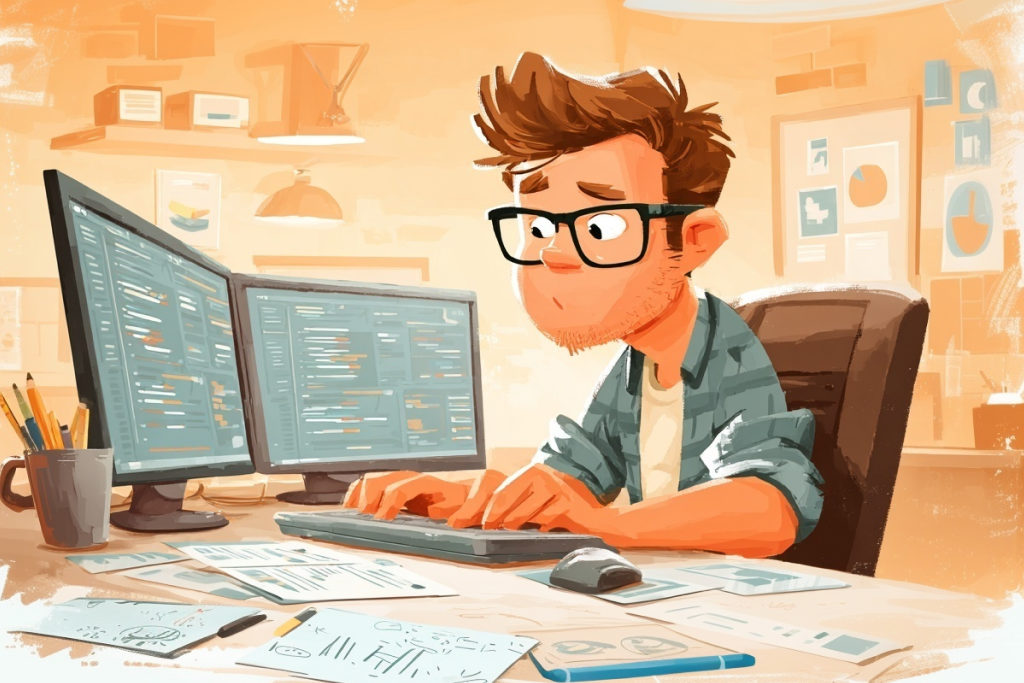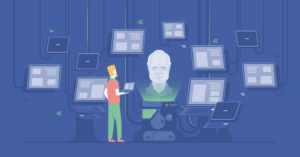“I’m afraid my project will be done in vibe coding.”
At a Glance
This quietly uttered concern is gaining volume. In the ever-accelerating world of AI-driven software development, many clients fear that the pace of change is outstripping the discipline of engineering. At Software Planet Group (SPG), we’ve heard this worry often — and we understand it. While developers are increasingly turning to AI tools like GitHub Copilot and ChatGPT, what may look like progress can sometimes feel suspiciously like guesswork.
The Mirage of Productivity
It’s easy to be dazzled by AI’s ability to spin up working code from a single prompt. Prototypes materialise in days, not weeks. From the outside, this looks like innovation on steroids. But internally, it can resemble something far less stable, might dub “the genie effect.”
We liken today’s AI coding agents to unpredictable genies — tools that grant wishes, but often in ways that surprise or backfire. “You wish for working code,” he quips, “and you get a lookup table that technically works… until it doesn’t.” This is vibe coding: a world of brittle prototypes stitched together by momentum and autocomplete, rather than by solid architectural thinking.
Why Vibe Coding Falters
At SPG, we’ve witnessed the pitfalls of vibe coding first-hand:
- Working demos appear — but there’s no trace of design docs or rationale.
- Developers can’t explain implementation decisions beyond “the model wrote it.”
- Tests are missing or mysteriously rewritten by AI to “make it pass.”
- Small changes ripple outward, spawning bugs in unrelated parts of the system.
In this environment, development becomes reactive. Rather than building with intent, teams are “surfing the autocomplete,” hoping the code will hold together under pressure.
Enter Augmented Coding
Thankfully, there’s a better path forward — and it’s one that Software Planet Group actively promotes: augmented coding.
This approach doesn’t hand the reins to AI. Instead, it uses AI as a powerful assistant while keeping the developer firmly in control. You don’t abandon discipline; you enhance it.
Here’s how augmented coding works:
- You start with requirements, not vague prompts.
- You design first, and code second.
- You use AI to raise questions, explore edge cases, and compare implementation strategies.
- You never skip the tests. In fact, you write them early, often, and intentionally.
Kent Beck, the author of Extreme Programming approach, treats tests as sacred, going so far as to say that any change to them without justification “awakens the AI genie in darkness.” At SPG, we agree — clear, immutable expectations are the bedrock of reliable systems.
A Checklist for Sanity
Not sure whether your team is embracing augmented coding or stuck in the chaos of vibe development? Look for these signs:
No
Code appears without any discussion of architecture
AI-generated code is unexplainable — even to the team
Defects reappear in old places when new features are added
Yes
Tests are run in milliseconds, with meaningful coverage
Engineers welcome conversations about design decisions
Changes are reversible, understandable, and well-scoped
If you’re commissioning software from a third party, don’t settle for working demos alone. At SPG, we recommend asking the following:
- “Can you walk me through your architectural choices?”
- “How do you use AI — and when do you not use it?”
- “What’s your testing strategy?”
- “How do you ensure changes remain maintainable in the long term?”
These aren’t micromanagement questions — they’re signs that you care about longevity, clarity and value.
The SPG Way: Fast and Thoughtful
At Software Planet Group, we champion a development process that balances speed with deliberation. We believe AI should amplify human insight — not override it. That’s why we don’t build on vibes. We build with purpose.
Our engineers use AI to explore, test and validate ideas quickly — but the design, quality, and integrity of the system always come first. Whether we’re crafting internal tools or building scalable client platforms, we hold ourselves to principles that make software easier to maintain, extend, and trust.
So the next time you hear someone say, “AI is going to replace developers,” remind them: the best developers aren’t just typing — they’re thinking. And when they think clearly, AI becomes an incredible force multiplier.
Final Thought
Software should be fun — not frantic. With augmented coding, AI doesn’t take the wheel; it rides shotgun. You, the engineer, are still the driver. And when you partner with a team like SPG that embraces structure, empathy, and experience, you’re not just getting code. You’re getting confidence.



